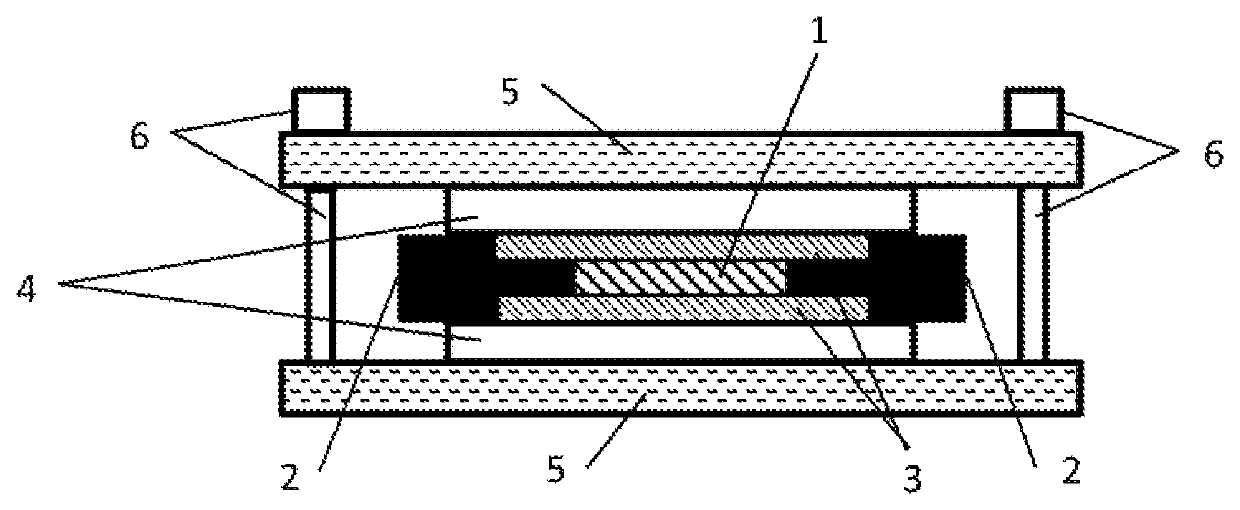Heat dissipation structure for electric circuit device
a technology of electric circuit device and heat dissipation structure, which is applied in the direction of semiconductor devices, semiconductor/solid-state device details, electrical apparatus, etc., can solve the problems of difficult mass production, fragile surface of the swirl layer, and difficult contact with the adherend, so as to maintain the heat dissipation structure, excellent heat dissipation performance and mass-productivity
- Summary
- Abstract
- Description
- Claims
- Application Information
AI Technical Summary
Benefits of technology
Problems solved by technology
Method used
Image
Examples
example 1
[0056]The electric circuit device A and thermal conductive member B (boron nitride-resin composite sheet) were piled up such that their center lines were overlapped and the 35 mm side of the heatsink and the 45 mm side of thermal conductive member B were arranged in parallel. Layers of thermal conductive member B were put on both the upper and lower heatsinks of electric circuit device A, respectively. They were adhered by a press machine at 10 MPa and 200 degrees C. for 24 hours. Then two coolers D were put on both the upper and lower surfaces, respectively, such that the center lines of thermal conductive member B and cooler D were overlapped and the 45 mm side of thermal conductive member B and the 50 mm side of cooler D were arranged in parallel to obtain a heat dissipation structure according to Example 1. A fastening member was attached at the four corners of the two coolers to apply the compressive load of 10 MPa evenly on the layered surface.
Evaluation of Thermal Properties ...
example 2
[0058]The same process as Example 1 was carried out except that layers of thermal grease C were provided at the interfaces between the heatsinks and thermal conductive members B. The thermal grease C layers had the thickness of 20 microns. The thermal resistance was measured for Example 2 as the same as Example 1. The result is shown in Table 2. The thermal grease C layers were formed by a screen printer.
example 3
[0059]The same process as Example 1 was carried out except that layers of thermal grease C were provided at the interfaces between the thermal conductive members B and the coolers D. The thermal grease C layers had the thickness of 20 microns. The thermal resistance was measured for Example 3 as the same as Example 1. The result is shown in Table 2.
PUM
| Property | Measurement | Unit |
|---|---|---|
| mean particle diameter | aaaaa | aaaaa |
| aspect ratio | aaaaa | aaaaa |
| thickness | aaaaa | aaaaa |
Abstract
Description
Claims
Application Information
 Login to View More
Login to View More - R&D
- Intellectual Property
- Life Sciences
- Materials
- Tech Scout
- Unparalleled Data Quality
- Higher Quality Content
- 60% Fewer Hallucinations
Browse by: Latest US Patents, China's latest patents, Technical Efficacy Thesaurus, Application Domain, Technology Topic, Popular Technical Reports.
© 2025 PatSnap. All rights reserved.Legal|Privacy policy|Modern Slavery Act Transparency Statement|Sitemap|About US| Contact US: help@patsnap.com

